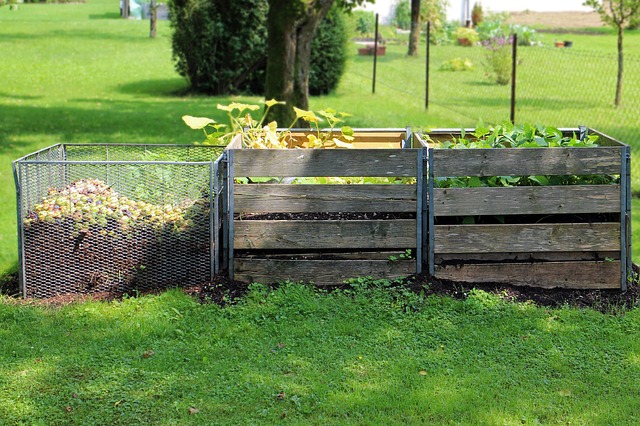Composting

Principle
Composting is a solution that reduces waste at the source:
organic waste is naturally transformed, by the action of various organisms (bacteria, fungi, insect, earth worms) in the presence of oxygen. This transformation takes just a few weeks, but the compost must "ripen" for several months before it can be used in gardens and green areas.
This technique can reduce the weight of the waste stream by 30%.
Food waste quantities: 50 g of raw food waste per meal prepared, 150 g of cooked food waste per meal prepared (national averages for France estimated by ADEME for quantities of fermentable food waste produced per meal.)
Explanations
All organic waste can be composted. The result depends on the space and time allotted to this task, and the final use for the compost.
Compostable wastes are:
- restaurant and food service waste: kitchen waste (vegetable and fruit peelings, unused quantities that are not saved),
- table scraps and leftovers from users' meals. Paper napkins can also be composted. The following waste must be excluded:
plastic, metal or soiled food packaging (trays, yogurt cups, tins, etc.), paper and card.
Compostable waste can be classed in three categories, by level of technical intervention required for composting:
• Category 1, easily compostable: fruit and vegetable peelings (including citrus fruits), withered, bruised or damaged fruits and vegetables.
Fruits and vegetables should be cut into two or three pieces (apples, oranges, zucchini squash, etc.) to facilitate decomposition,
• Category 2, second level of composting: meal leftovers, without meat or fish,
• Category 3, compostable with care: meal scraps including meat, fish, cheese. To be composted without problems these scraps must be well mixed with a good substrate.
For simple composting, you can choose to compost only fruit and vegetable peelings.
This process calls for dry and structuring carbon inputs, such as woodchips or shredded garden waste, which are generally available onsite or from nearby sources. These elements are introduced in proportions varying from 30 to 50% by volume, depending on the humidity and density of food waste to be composted.
Open-air composting is possible but unsightly.
Composting bins are more appropriate for establishments open to the public; composters, also called compost bins or silos, are containers made of wood,
metal or plastic. They contain a limited volume of waste to be composted, and reduce surface area, keeping the compost from drying out or getting cold.
Advantages: compact (between 5 and 50 m² of space required), appearance
Drawbacks: small volume, requires regular surveillance.
Implementation
1- Estimate the amount of waste produced and review your waste separation policy
2- Assess production of potentially compostable organic waste
3- Choose the best formula, depending on time and space criteria, and possible uses for finished compost
4- Choose the best composting site, according to distance from kitchens and galleys
5- Solicit training from local authorities or associations
6- Develop action and monitoring plan with the employees involved
7- If you feel that composting would be too complicated in your establishment, organic and food waste can be collected by a service company for processing (composting, anaerobic digestion) or by a farmer for anaerobic digestion to produce biogas (methanisation).
Costs
None, if you compost in open-air piles, or if you build your own composter.
Cost: €100 - 1,000 depending on the number of composters.
Benefits
Economic benefits
- Reduced waste collection and treatment costs;
- Positive image for your establishment
- Motivation of employees for a common project
Environmental benefits:
- Lower groundwater risk (controlled leaching from centralised composting platforms or landfill sites);
- Waste treatment: reduced greenhouse gas emissions at landfill sites, fewer atmospheric releases from incinerators, less waste transport by truck;
- Soil regeneration and protection of biodiversity, thanks to use of a high-quality soil amendment (compost) on your grounds
- Less use of chemical pesticides, fertilisers, etc.
Constraints
1- Set up composter
2- Get staff involved and draw up a schedule for turning over compost
3- Time devoted to starting up compost
4- Compost information and training
5- If composting all food waste, including table scraps, find a supplier of woodchips or mulch, or invest in a garden shredder (roughly €300)